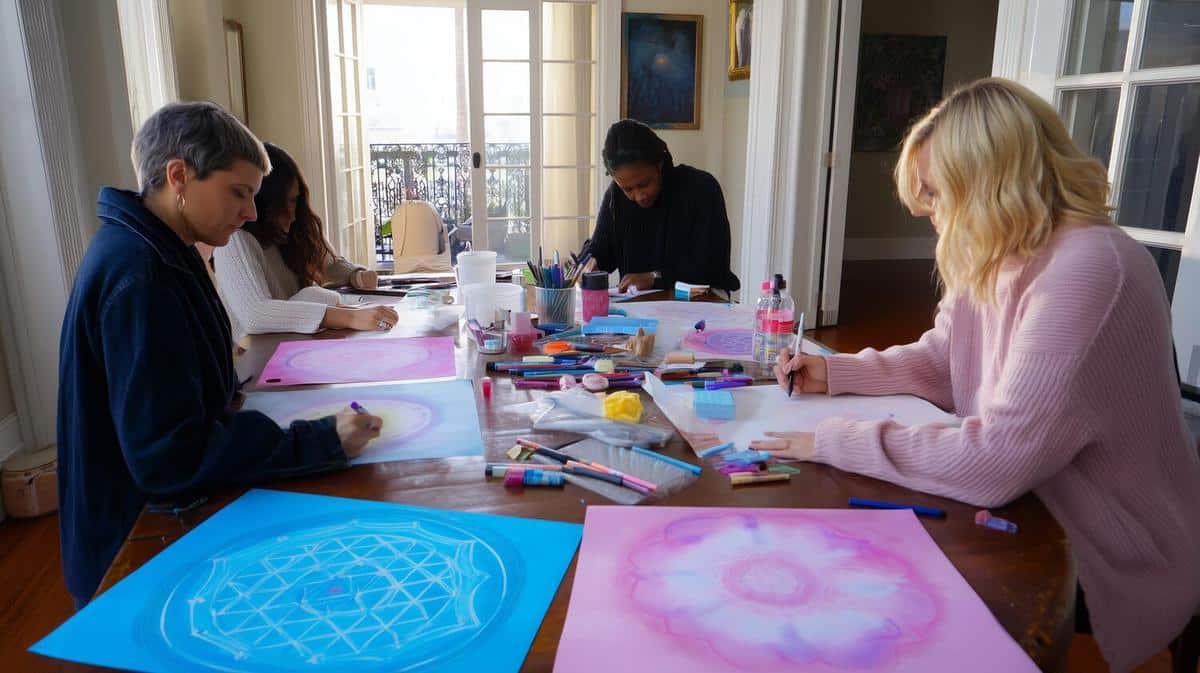
Art Therapy: Creative Expression as a Path to Wellness
Art therapy offers a unique avenue for exploring emotions and promoting healing, utilizing creativity as a tool for wellness. By engaging in creative processes, individuals can enhance their mental health and gain deeper insights into personal challenges.
Art therapy is a form of psychotherapy that uses the creative process of making art to improve a person’s physical, mental, and emotional well-being. This therapeutic approach is based on the idea that self-expression through art can foster healing and mental wellness. According to the American Art Therapy Association, art therapy helps people of all ages to resolve conflicts, develop interpersonal skills, manage behavior, reduce stress, and increase self-esteem and awareness.
Understanding Art Therapy
Art therapy involves using various art forms such as drawing, painting, sculpture, and collage to express and process emotions. It is facilitated by professional art therapists who guide individuals through the creative process to explore their feelings.
Expert Insights
Dr. Cathy Malchiodi, a leading figure in art therapy, emphasizes that art therapy is not about the final product but the process of creation itself. She states, “The act of creating art can be a powerful way to tap into emotions and express things that might be difficult to verbalize.”
Research and Statistics
Studies have shown that art therapy can significantly decrease anxiety and improve mood. For example, a study published in the Journal of the American Art Therapy Association found that participants experienced a decrease in cortisol levels, indicating reduced stress, after just 45 minutes of art making.
Personal Stories
Consider the story of Mark, who struggled with depression. Through art therapy, he discovered a safe space to express his feelings visually. This expression helped him articulate emotions he found hard to verbalize, eventually contributing to his recovery journey.
Actionable Tips for Incorporating Art Therapy
- Start simple: Begin with basic materials like pencils and paper. The goal is not to create a masterpiece but to express yourself.
- Set aside time: Dedicate a regular time each week for art-making to establish a routine.
- Seek guidance: Consider working with a certified art therapist to tailor the experience to your needs.
Benefits of Art Therapy
| Benefit | Description |
|---|---|
| Stress Reduction | Engaging in art can lower stress hormones and provide a calming effect. |
| Emotional Release | Art allows for the release of pent-up emotions and can help process trauma. |
| Self-Discovery | Creative expression can lead to greater self-awareness and understanding of personal issues. |
| Confidence Boost | Completing art projects can enhance self-esteem and confidence. |
| Non-verbal Communication | Art provides a way to communicate feelings that may be difficult to express with words. |
| Improved Focus | Art-making can improve concentration and attention to detail. |
| Social Connection | Participating in group art therapy can foster a sense of community and belonging. |
| Mindfulness | Art encourages living in the moment and can enhance mindfulness practices. |
Frequently Asked Questions
Is art therapy only for those who are good at art?
No, art therapy is for everyone, regardless of artistic skill. The focus is on the process of creation, not the end product.
How do I find a certified art therapist?
You can find certified art therapists through professional organizations such as the American Art Therapy Association.
Can art therapy help with anxiety?
Yes, art therapy is known to help reduce anxiety by providing a constructive outlet for expressing emotions.
For those looking to explore this form of therapy, consider reaching out to professionals in your area or exploring online resources that offer guidance and support. Engaging with art therapy can be a transformative journey, opening new pathways to understanding and emotional wellness.


